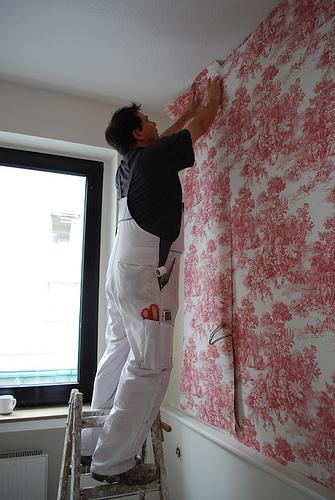Widespread adoption of solar power is now commonplace around the world, however, this does not mean the technology has stopped advancing its amazing capabilities. A team of scientists in VTT Technical Research Centre in Finland are developing a solar wallpaper that is both more efficient and less expensive than previous products on the market.
Consumers should now be able to take advantage of the sun’s radiation not just using their roof, but their walls too. These Finnish researchers were able to develop 100% recyclable organic solar panels ready for mass production for distribution to the market. The wallpaper is printed on a film product which allows the solar panels to be as abundant and cheap as regular wallpaper.
5 Times More Efficient, 10 Times Less Waste
This organic solar film is only 0.2 mm thick, and can be produced at a rate of 100 metres per minute. The film is equipped with polymer light collecting layers and electrodes sandwiched inside plastic substrates and films.
Images can also be printed on the surface of this film, making solar wallpaper a serious competitor to regular products. One square metre of the film is able to generate about 10.4 watts of electricity at 3.2 amperes.
Although organic solar panels are flexible and aesthetically attractive, they are not widely deployed because they are more expensive than and not as efficient as the standard inorganic solar panels made from silicon.
This is what makes the Finnish breakthrough so revolutionary, as they use a special material called perovskite, which allowed them to develop an inorganic solar cell that is five times more efficient than an organic one, and uses ten times less materials.
The hard part though, is creating a new method of integrating perovskite into the roll-to-roll printing process to manufacture inorganic cells efficiently. This is what the VTT research and development team is currently working on.
From Solar Producing Walls to Solar Laminated Windows
This new low-temperature method of making perovskite solar cells has also enabled the possibility for colourful, high-efficiency, see-through photovoltaic films that could be plastered on walls, or even laminated on windows.
Perovskite solar cells have become the new craze of the photovoltaic industry in the past five years. Their efficiency has soared from 4% to more than 20%, which is not far away from the 25% efficiency of silicon.
Furthermore, the light-absorbing perovskite layers are easy and much cheaper to make compared to the conventional silicon wafers. When some precursor chemical solutions are added and coated on a substrate and then heated to evaporate the solvent, a film of perovskite crystals will be created.
However, the solar wallpaper has some drawbacks, in that high temperatures can cause problems for the perovskite chemical. Crystals usually form unevenly during heat-treatment. According to Nitin Padture, an engineering professor at Brown University, this could leave small holes in the film.
The usual temperature of 100–150°C which is required to create the crystals also limits them from being made on plastic surfaces because high temperatures would melt the plastic. Researchers are hopeful the the solar wallpapers developed in VTT have solved this issue.



